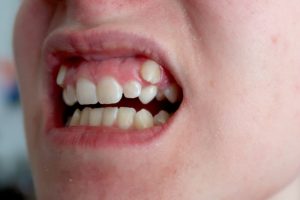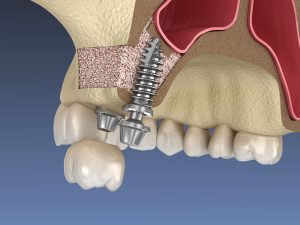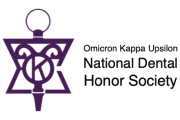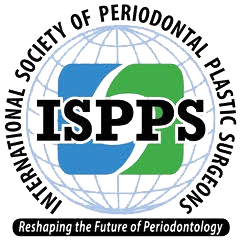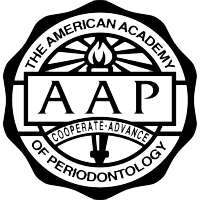Are You Dealing with Impacted Canines? Our Seattle Oral Surgeon is Here to Help
Impacted canines are a common dental issue that can significantly impact your oral health and smile aesthetics. At Maring Surgical Oral Surgery and Dental Implant Center in downtown Seattle, we specialize in diagnosing and treating impacted canines with advanced techniques and personalized care. Our team of experienced professionals, led by Dr. Thomas Maring and Dr. Susan Maring, offers exceptional oral surgery solutions for patients dealing with this challenging dental condition.
Don’t let impacted canines compromise your or your child’s oral health and smile. Call our oral surgeon in Seattle today at 206-343-7500 to schedule your consultation and experience the benefits of our collaborative, patient-centered approach to care, serving Bellevue, Kirkland, and Mercer Island.
The Maring Surgical Advantage: Dual Expertise for Superior Results
What sets Maring Surgical Oral Surgery and Dental Implant Center apart is our distinctive team approach. Dr. Thomas Maring is an experienced oral and maxillofacial surgeon who works in tandem with Dr. Susan Maring, a skilled Seattle periodontist, to provide comprehensive care for impacted canines and other complex oral health issues.
This collaboration allows us to offer:
- Integrated treatment planning: We consider both surgical and periodontal aspects of your case for optimal outcomes.
- Streamlined care: With both specialists in one location, you benefit from coordinated treatments and fewer appointments.
- Comprehensive solutions: Our team can address a wide range of oral health concerns simultaneously, saving you time and ensuring thorough care.
A Legacy of Excellence in Seattle Oral Surgery
For over 25 years, Maring Surgical Oral Surgery and Dental Implant Center has been a trusted name in downtown Seattle. Our commitment to excellence is reflected in our consistent recognition:
- Dr. Thomas Maring has been selected as “Seattle’s Top Dentist in Oral and Maxillofacial Surgery” by Seattle Met Magazine from 2006-2023.
- Dr. Susan Maring has been consistently chosen as “Seattle’s Top Dentist in Periodontics” by her colleagues in Seattle Met Magazine.
These accolades underscore our dedication to providing the highest standard of care for our patients, including those dealing with impacted canines.
What Are Impacted Canines?
Canine teeth, also known as cuspids, play a vital role in your bite function and smile appearance. These pointed teeth are designed to guide your bite and help you tear food. However, when permanent canine teeth fail to emerge properly through the gum line, they become impacted. This condition can lead to various oral health issues if left untreated.
Causes of Impacted Canines
Impacted canine teeth occur due to several factors, including:
- Overcrowding: Lack of space in the dental arch can prevent proper eruption.
- Abnormal growth patterns: The tooth may develop in an incorrect position or angle.
- Presence of extra teeth: Supernumerary teeth can block the canines’ path.
- Genetics: Some individuals may be predisposed to impacted teeth.
Recognizing the Signs of Impacted Canines
Early detection of impacted canines is key to successful treatment. Some signs to watch for include:
- Missing canine tooth in adults
- Persistent baby canine tooth
- Swelling in the gum area
- Pain or discomfort in the jaw or gums
- Misalignment of surrounding teeth
If you notice any of these symptoms, consult with our oral surgeon promptly. At Maring Surgical Oral Surgery and Dental Implant Center, we offer comprehensive evaluations to diagnose impacted canines and develop tailored treatment plans.
The Importance of Treating Impacted Canines
Addressing impacted canines is essential for maintaining optimal oral health and a beautiful smile. Untreated impacted canines can lead to:
- Misalignment of surrounding teeth
- Increased risk of dental decay and gum disease
- Formation of cysts or tumors
- Root resorption of adjacent teeth
- Chronic pain and discomfort
Advanced Diagnostic Techniques at Maring Surgical
At our state-of-the-art facility in downtown Seattle, we utilize cutting-edge diagnostic tools to accurately assess impacted canines. Our advanced imaging technologies include:
- 3D Imaging: These provide detailed, three-dimensional views of your oral structures, allowing for precise treatment planning.
- Digital X-rays: High-resolution images help us evaluate the position and condition of impacted canines with minimal radiation exposure.
These advanced diagnostic techniques enable our experienced oral surgeon in Seattle to develop the most effective treatment strategies for each patient’s unique case.
Treatment Options for Impacted Canines
Surgical Exposure and Orthodontic Alignment
This common approach involves a minor surgical procedure to expose the impacted canine, followed by orthodontic treatment to guide the tooth into its proper position. Our downtown Seattle oral surgeon works closely with orthodontists to coordinate care and achieve optimal results.
Extraction and Replacement
In some cases, particularly with severely impacted canines or older patients, extraction may be the best option. Our skilled oral surgeon can remove the impacted tooth and discuss replacement options, such as dental implants, to restore your smile’s function and aesthetics.
Monitoring and Observation
For younger patients, we may recommend a period of observation to allow for potential natural eruptions. Regular check-ups and imaging studies help us track the tooth’s progress and determine if intervention is necessary.
The Impacted Canine Treatment Process with Dr. Maring
Evaluation and Treatment Planning
Our team will conduct a detailed examination, including advanced imaging studies, to assess the position and condition of your impacted canine. We’ll develop a customized treatment plan based on your specific case, considering factors such as age, overall oral health, and the position of the impacted tooth.
Surgery (If Necessary)
If surgical intervention is necessary, our skilled oral surgeon will perform the procedure with precision and care, using the latest techniques to minimize discomfort and promote rapid healing. This intervention could include tooth extraction or tooth exposure, depending on your needs.
Follow-up Care and Monitoring
We work closely with your general dentist and orthodontist to ensure optimal alignment and seamless post-surgical care of your newly exposed canine tooth. Our team will continue to monitor your progress to ensure the success of your treatment and maintain your oral health.
Don’t let impacted canines affect your smile and oral health. Contact Maring Surgical Oral Surgery and Dental Implant Center at 206-343-7500 to schedule your consultation and take the first step towards a healthier, more beautiful smile.
